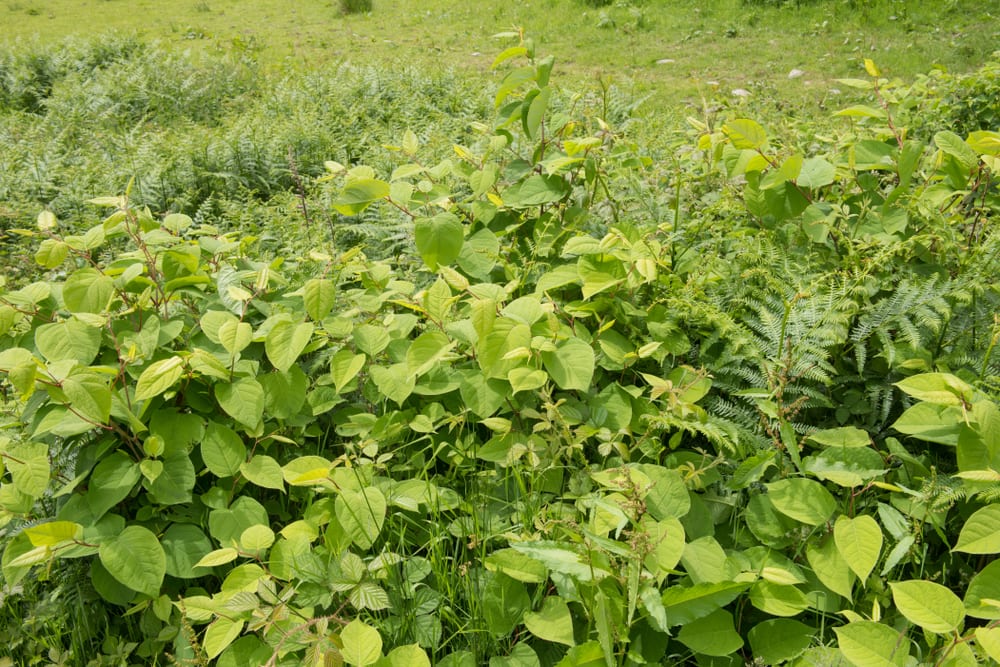Experienced land manager and licensed knotweed contractor gives us his best advice on how to deal with this feared garden monster.
What is Japanese knotweed?
Japanese knotweed was introduced to Britain by the Victorians; their desire to have the most impressive, exotic, diverse and ostentatious of everything brought many things to Britain. Some of these plants we now wish had stayed in their native soil– Japanese knotweed was one of them.
Japanese knotweed is a very fast-growing and strong clump-forming perennial, with tall, dense annual stems. Stem growth is renewed each year from the rhizomes, which are creeping underground stems. British knotweed plants don't set seed as all knotweed plants in the UK are female– it spreads via the rhizomes, so even the tiniest piece left in the soil can sprout a whole new, fast-growing plant.
If you have knotweed on your land, you are legally obliged to keep it from spreading out of your boundaries. The best way to do this is by hiring a contractor to help you contain the spread, as knotweed requires herbicides to control or a large amount of digging and burning to remove. Knotweed can grow through tarmac and concrete, and with out any intervention will take over everything in its path.
Appearance
In spring, reddish-purple fleshy shoots emerge from crimson-pink buds at ground level. These grow incredibly rapidly. In summer, dense stands of tall, bamboo-like canes which grow to approximately two metres tall. These canes have characteristic purple flecks, and produce branches from nodes along its length. The stems die back to ground level in winter, but the dry canes remain for several months or longer. The creamy white flower tassels produced in late summer and early autumn reach up to 15cm and it produces heart shaped leaves up to 14cm long.
Managing knotweed
Non-chemical controls
Digging out is possible, but given how deep the rhizomes can penetrate, the plant usually grows back. Disposal is also a problem, as Japanese knotweed is classed as ‘controlled waste’ under the Environmental Protection Act 1990. This means you have to dump it at a licensed landfill site and you need special licenses to remove it from your site. Regulations also cover how to wrap, dispose of and transport knotweed. To destroy any Japanese knotweed remains on site, allow the cut canes to dry out, then burn them. On no account add them to your normal household waste. To remove regrowth, you need to dig it out, removing as much root as possible, then repeatedly destroy the regrowth by mowing or strimming. This gradually exhausts the energy reserves in the remaining underground parts of the plant, but it could take several years to make any significant difference.
Chemical Control
It is almost impossible to kill off large areas of knotweed, as leaving even a thumbnail-sized piece in the ground will result in regrowth. The most effective way to deal with knotweed in my opinion is to do stem injection with herbicides. It is my belief (based on many years of practical experience) that stem injection is by far the best method of combatting Japanese knotweed– spraying the leaves may well kill off the stems, but the root system remains.
Effective stem injection requires the use of a licensed contractor; commercially available herbicides available in garden centres are not powerful enough to kill the stems and rhizomes. A licensed contractor will have access to industrial grade herbicide and this is the only type of weed killer that I have found has a lasting effect on the growth of knotweed. Injecting into the stems during early autumn has proved most effective, as the stems begin to dry out and die back. Japanese knotweed is a herbaceous perennial, which means it dies back to the root each year, transferring all the nutrients back to the rhizomes to lay dormant until spring. Each stem needs to be individually injected, as each spur comes from its own small section of rhizome and you need to kill off the whole system. Once the plant has completely died back above ground, it is then feasible to begin to excavate and burn the root systems.
It is worth noting that on very large patches of knotweed it is unlikely that you will be able to kill it off entirely. It is possible, but this can take many years of repeated treatment.









